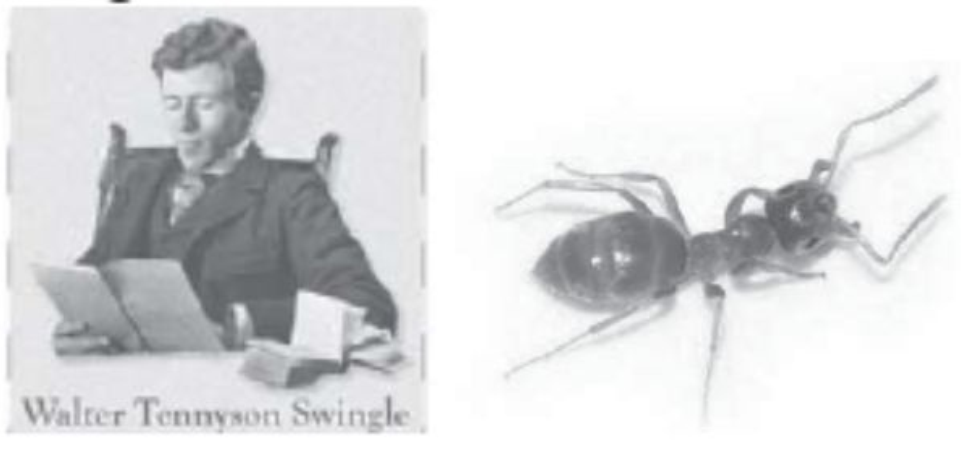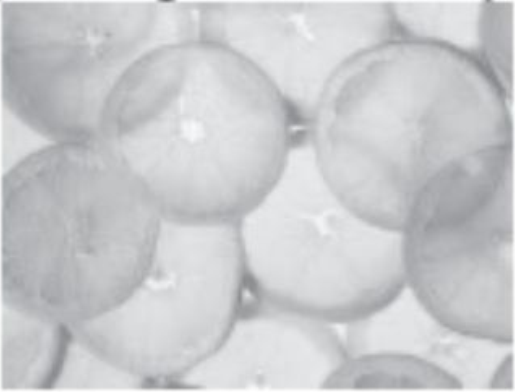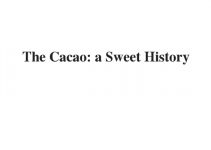Table of Contents
Chinese Yellow Citrus Ant for BIOLOGICAL CONTROL
Passage

A. In 1476, the farmers of Berne in Switzerland decided, according to this story, there was only one way to rid their fields of the cutworms attacking their crops. They took the pests to court. The worms were tried, found guilty and excommunicated by the archbishop. In China, farmers had a more practical approach to pest control. Rather than rely on divine intervention, they put their faith in frogs, ducks and ants. Frogs and ducks were encouraged to map up the pests in the paddies and the occasional plague of locusts.
But the notion of biological control began with an ant. More specifically, the story says, it started with the predatory yellow citrus ant is a type of weaver ant, which has been polishing off pests in the orange groves of southern China for at least 1700 years. The yellow citrus ant $0 is a type of weaver ant, which binds leaves and twigs with silk to form a neat, tent-like nest. In the beginning, farmers made do with the odd ants’ nest here and there. But it wasn’t long before growing demand led to the development of a thriving trade in nests and a new type of agriculture—ant farming.
B. For an insect that bites, the yellow citrus ant is remarkably popular. Even by ant standards, Oecophylla smaragdina is a fearsome predator. It’s big, runs fast and has a powerful nip – painful to humans but lethal to many of the insects that plague the orange groves of Guangdong and Guangxi in southern China. And for at least 17 centuries. Chinese orange growers have harnessed these sixlegged killing machines to keep their fruit groves healthy and productive.
The story explains that citrus – a fruits evolved in the Far East and the Chinese discovered the delights of their flesh early on. As the ancestral home of oranges, lemons and pomelos, China also has the greatest diversity of citrus pests. And the trees that produce the sweetest fruits, the mandarins—or kan-attract a host of planteating insects, from black ants and sap sucking mealy bugs to leaf-devouring caterpillars. With so many enemies, fruit growers clearly had to have some way of protecting their orchards.
C. The West did not discover the Chinese orange growers’ secret weapon until the early 20th century. At the time, Florida was suffering an epidemic of: itrus canker and in 1915 Walter Swingle, a plant physiologist working for the US Department of Agriculture, was, the story says, sent to China in search of varieties of orange that were resistant to the disease. Swingle spent some time studying the citrus orchards around Guangzhou, and there he came across the story of the cultivated ant. These ants, he was told, were “grown” by the people of a small village nearby who sold them to the orange growers by the nestful.
D. The earliest report of citrus ants at work among the orange trees appears in a book on tropical and subtropical botany written by His Han in AD 304. “The people of Chiao-Chih sell in their markets ants in bags of rush matting. The nests are like silk. The bags are all attached to twigs and leaves which, with the ants inside the nests, are for sale. The ants are reddish-yellow in colour, bigger than ordinary ants. In the south if the kan trees do not have this kind of ant, the fruits will all be damaged by many harmful insects, and not a single fruit will be perfect.”

E. Initially, farmers relied on nests which they collected from the wild or bought in the market — where trade in nests was brisk. ‘It is said that in the south orange trees which are free of ants will have wormy fruits. Therefore the people race to buy nests for their orange trees,’ wrote Liu Hsun in Strange Things Noted in the South, written about AD 890. The business quickly became more sophisticate. From the 10th century, country people began to trap ants in artificial nests baited with fat. “Fruit growing families buy these ants from vendors who make a business of collecting and selling such creatures,” wrote Chuang Chi-Yu in 1130.
“They trap them by filling hogs’ or sheep’s bladders with fat and placing them with the cavities open next to the ants’ nests. They wait until the ants have migrated into the bladders and take them away. This is known as ‘rearing orange ants’.” Farmers attached the bladders to their trees, and in time the ants spread to other trees and built new nests. By the 17th century, growers were building bamboo walkways between their trees to speed the colonization of their orchards. The ants ran along these narrow bridges from one tree to another and established nests “by the hundreds of thousands”.
F. Did it work? The orange growers clearly thought so. One authority, Chi Ta— Chun, writing in 1700, stressed how important it was to keep the fruit trees free of insect pests, especially caterpillars. “It is essential to eliminate them so that the trees are not injured. But hand labour is not nearly as efficient as ant power…” Swingle was just as impressed. Yet despite this reports, many Western biologists were skeptical.
In the West, the idea of using one insect to destroy another was new and highly controversial. The first breakthrough had come in 1888, when the infant a orange industry in California had been saved from extinction by the Australian vedalia beetle. This beetle was the only thing that had made any inroad into the explosion of cottony cushion scale that was threatening to destroy the state’s citrus crops. But, as Swingle now knew, California’s “first” was nothing of the sort. The Chinese had been expert in biocontrol for many centuries.
G. The story goes on to say that the long tradition of ants in the Chinese orchards only began to waver in the 1950s and 1960s with the introduction of powerful organic (I guess the author means chemical insecticides. Although most fruit growers switched to chemicals, a few hung onto their ants. Those who abandoned ants in favour of chemicals quickly became disillusioned. As costs soared and pests began to develop resistance to the chemicals, growers began to revive the old ant patrols.
They had good reason to have faith in their insect workforce. Research in the early 1960s showed that as long as there were enough ants in the trees, they did an excellent job of dispatching some pests— mainly the larger insects—and had modest success against others. Trees with yellow ants produced almost 20 per cent more healthy leaves than those without. More recent trials have shown that these trees yield just as big a crop as those protected by expensive chemical sprays.
H. One apparent drawback of using ants—and one of the main reasons for the early skepticism by Western scientists was that citrus ants do nothing to control mealy bugs, waxy-coated scale insects which can do considerable damage to fruit frees. In fact, the ants protect mealy bugs in exchange for the sweet honeydew they secrete. The orange growers always denied this was a problem but Western scientists thought they knew better. Research in the 1980s suggests that the growers were right all along.
Where mealy bugs proliferate under the ants’ protection they are usually heavily parasitized and this limits the harm they can do. Orange growers who rely on carnivorous ants rather than poisonous chemicals maintain a better balance of species in their orchards. While the ants deal with the bigger insect pests, other predatory species keep down the numbers of smaller pests such as scale insects and aphids. In the long run, ants do a lot less damage than chemicals-and they’re certainly more effective than excommunication.
Questions
Questions 14-18
Use the information in the passage to match the year (listed A-G) with correct description below. Write the appropriate letters A-G in boxes 14-18 on your answer sheet.
NB you may use any letter more than once
A 1888
B 1476
C 1915
D 1700
E 1130
F AD
G 1950
14 First record of ant against pests written.
15 WS studied ant intervention method in China.
16 First case of orange crops rescued by insect in western world.
17 Chinese farmers start to choose chemical method.
18 A book wrote mentioned ways to trap ants.
Questions 19-26
Do the following statements agree with the information given in Reading Passage?
In boxes 19-26 on your answer sheet, write
TRUE if the statement is true
FALSE if the statement is false
NOT GIVEN if the information is not given in the passage
19 China has the most citrus pests counted in types in the world.
20 Swingle came to China in order to search an insect for the US government.
21 Western people were impressed by Swingle’s theory of pest prevention.
22 Chinese farmers realised that price of pesticides became expensive.
23 Some Chinese farmers start to abandon the use of pesticide.
24 Trees without ants had grown more unhealthy leaves than those with.
25 Yield of fields using ants is larger a crop than that using chemical pesticides.
26 Chinese orange farmers proposed that ant protection doesn’t work out of China.
Answers



